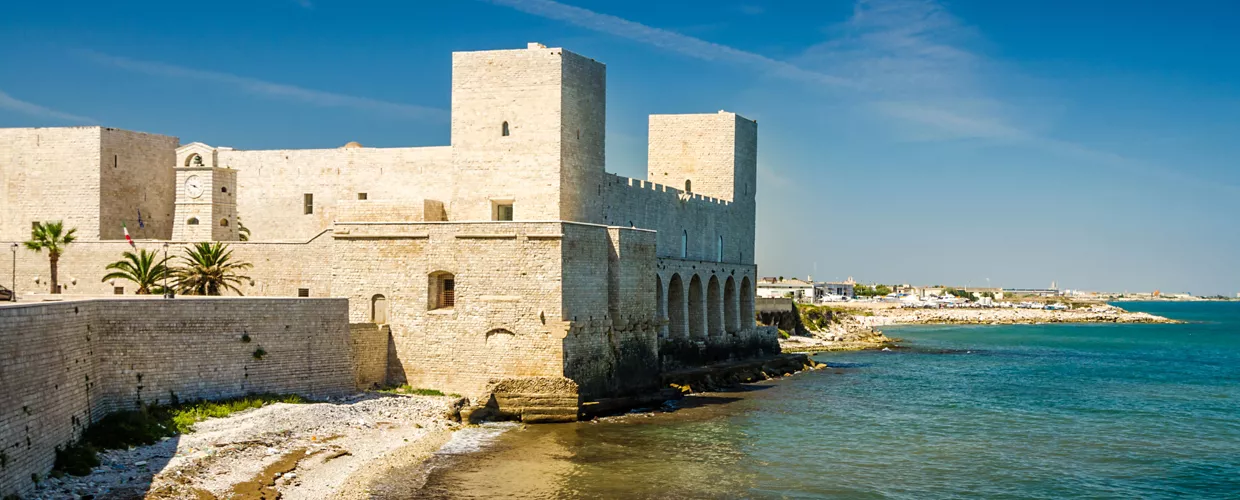This content was automatically translated. View the original text.


Overview
Trani Castle is a quadrilateral of geometric purity, washed by the waves of the Adriatic on one side and completed by four towers, one at each corner So scenic that one may suspect that Federic II of Swabia, the ruler who initiated its construction in 1233, allowed himself to be guided only by his highly refined sense of aesthetics. In reality, this architectural masterpiece was also conceived with a strong utilitarian spirit. Its purpose was above all to guard the Trani roadstead, a hub of important trade, and therefore it was to be built close to the port. In addition, the foundations needed to rest on a solid bank of rock, and this was found not far from the cathedral, resulting in a spectacular architectural pairing. Finally, it was necessary to design the castle so that it was functional both for defensive use and to accommodate the court. When Frederick II started the work, he therefore took as a model the most modern fortresses of the time, namely the quadrangular castles built by the Christian knights in the Holy Land, which he had seen in person during the Sixth Crusade. As early as 1259, Trani Castle was so beautiful that it was chosen for the wedding celebration of Manfred, son of Frederick II and king of Sicily, with Elena Ducas Comneno.
A few years later, poor Helena would be betrayed by the very castellan of Trani who, at the moment of danger, instead of giving her refuge, handed her over to the enemy Charles of Anjou. Who, having defeated Manfred, fell in love with the castle and also celebrated his marriage there, to Margaret of Burgundy. The current appearance of the castle is partly influenced by the changes made in the 16th century by Charles V of Habsburg to adapt it to firearms: the originally slender and soaring towers were lowered and the walls were strengthened, including the addition of the south-west rampart at spearhead. Today, the castle can be visited and used as an exhibition venue: since 2021, the external patrol walkways have also been made accessible to the public, and since 2022, the casemates have housed the collection of Queen Margherita of Savoy, representative of Italian artistic trends between the 19th and 20th centuries, donated to the State by Victor Emmanuel III in 1928.